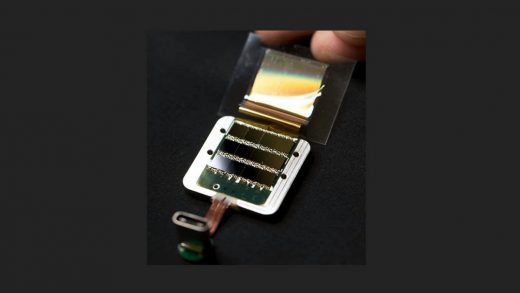
NASA’s SPHEREx mission has sent back its first images from space. This marks an important step before it begins the full survey of the sky. The space telescope, which was launched on March 11, 2025, is designed to scan millions of galaxies and collect data in infrared light. On March 27, its detectors captured uncalibrated images that show thousands of light sources, including distant stars and galaxies. The images, processed with added colours for infrared wavelengths, confirm that SPHEREx is operating as expected. Once fully operational, the telescope will take 600 exposures daily and map the entire sky four times during its two-year mission.
Recorded Images Reveals Interesting Details
According to NASA’s SPHEREx mission, the observatory’s six detectors recorded images of the same area of the sky, providing a wide field of view. The top three images represent one portion of the sky, while the bottom three cover the same section. As per the report, the SPHEREx catpured each image with around 100,000 light sources. As per multiple reports, scientists can now learn more about what celestial objects and its distance from Earth with the help of infrared wavelengths. The data from SPHEREx will also help researchers to explore the origins of water in the Milky Way. Moreover, it might also help the scientists to find more clues about the universe’s earliest moments.
Olivier Doré, SPHEREx project scientist at NASA’s Jet Propulsion Laboratory (JPL) and Caltech, told NASA that the telescope is functioning as intended. The infrared light detected by SPHEREx is invisible to human eyes, but colour mapping enables researchers to visualise and analyse it. The observatory’s unique design includes 17 infrared wavelength bands for each detector, creating a total of 102 hues in every six-image capture.
How the Telescope Works
Unlike Hubble or the James Webb Space Telescope, which focuses on specific areas of space, SPHEREx is built for large-scale surveys. It uses spectroscopy to break down light and identify chemical compositions and distances of celestial bodies. Light entering the telescope is divided into two paths, each leading to three detectors. Specialised filters process the incoming wavelengths, allowing for detailed observations of millions of cosmic sources.
Beth Fabinsky, deputy project manager at JPL, said in NASA’s official statement that the successful image capture represents a major milestone. The telescope has also reached its target operating temperature of minus 350 degrees Fahrenheit, crucial for detecting faint infrared signals. Since focusing cannot be adjusted after launch, mission engineers verified the accuracy of the telescope’s optics before sending it into space.
Jamie Bock, principal investigator at JPL and Caltech, confirmed in NASA’s report that the telescope is performing as expected. Engineers will continue testing before the observatory begins routine operations in late April.



